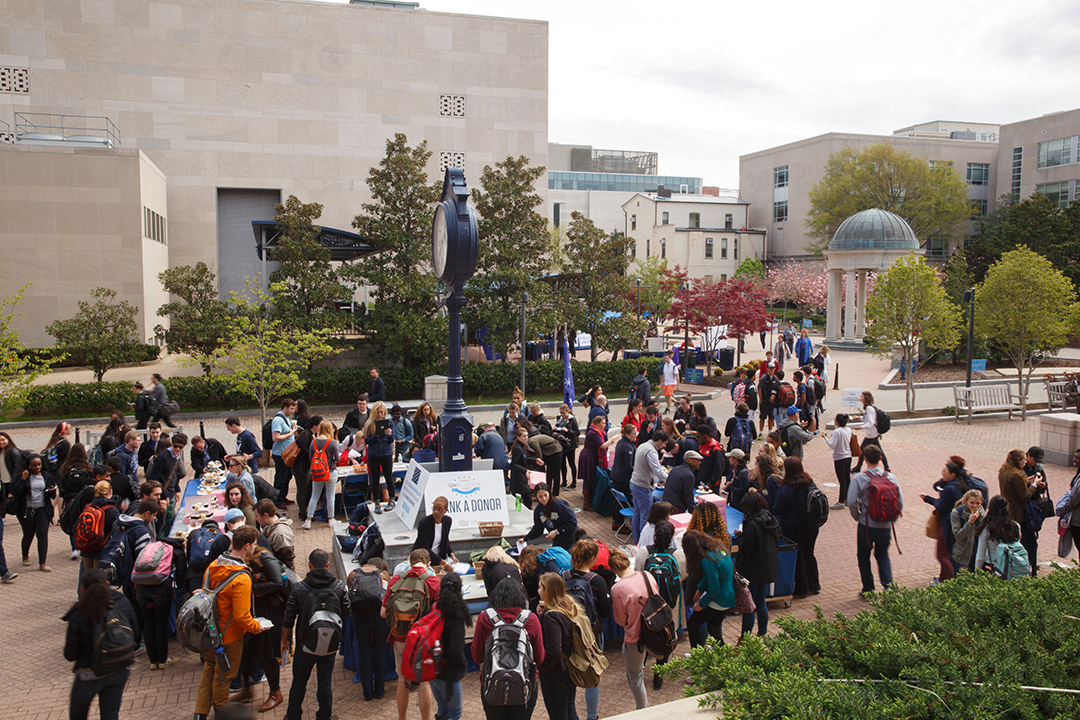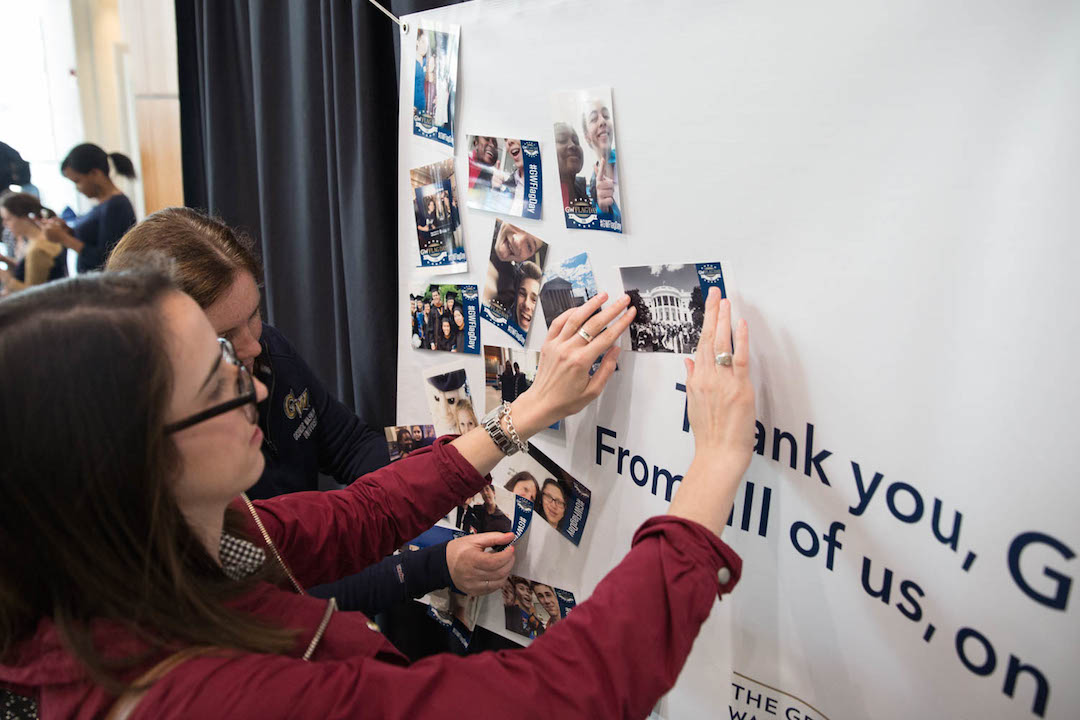The George Washington University community on Wednesday will celebrate GW Flag Day, the third-annual event recognizing alumni, parents, faculty, staff and friends who give back to the university. Activities throughout the day educate GW students, faculty and staff about Making History: The Campaign for GW and how philanthropy impacts the university experience.
The Division of Development and Alumni Relations and selected schools will have stations set up throughout the Foggy Bottom Campus, with George Washington’s Commander-in-Chief flag prominently displayed to help identify the people and places supported by philanthropy.
Students, faculty and staff are invited to come to Kogan Plaza between 11 a.m. and 4 p.m. to sign cards thanking alumni donors and receive a free cupcake. GW community members can also take photos in a photo booth and participate in “Philanthroquest,” a scavenger hunt activity that helps them learn about famous GW philanthropic landmarks—and offers the chance to win prizes. Those interested can visit Kogan Plaza between 9:30 a.m. and 4:30 p.m. to join in on the philanthropic fun.
Additionally, the Elliott School of International Affairs will hold a special networking lunch in the City View Room for students, staff, faculty and alumni to discuss the importance of giving back to the Elliott School.
This year, there’s also a student giving challenge: If at least 500 students make a gift—of any size and designated to the initiative of their choosing, such as to their peers participating in Colonial Crowdfunding—on GW Flag Day, the university will receive $5,000 to the Ronald W. Howard Student Assistance Fund, which provides emergency support to GW students in need.
As it has done in previous years, the university will hand out Commander-in-Chief flag buttons. Believed to have been personally designed by George Washington, the Commander-in-Chief flag is an adopted symbol of the Making History campaign. The flag represents a common goal of generating philanthropic support and perpetuates Washington's vision of a university in the nation’s capital that would serve as an intellectual hub.



